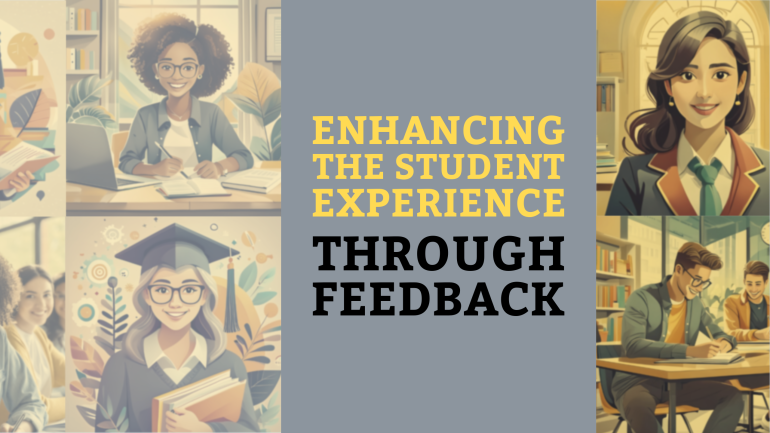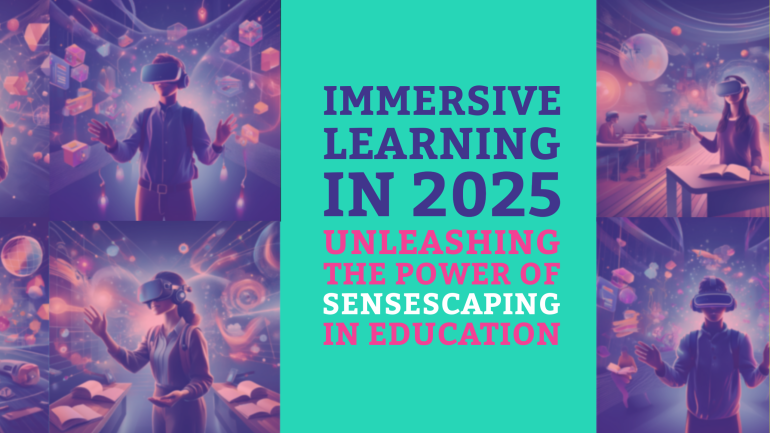Table of Contents
TL;DR: Enhancing the Student Experience through Feedback
- Feedback Culture: Cultivate a feedback culture that encourages open communication and values student input.
- Timely Feedback: Provide feedback promptly after assessments to enhance learning retention and address misconceptions early.
- Constructive Criticism: Ensure feedback is constructive, specific, and actionable to guide students towards improvement.
- Peer Feedback: Incorporate peer feedback to promote collaboration, diverse perspectives, and a sense of community among students.
- Feedback Variety: Utilize a variety of feedback methods such as written comments, audio recordings, and one-on-one discussions to cater to different learning styles.
Many educational institutions strive to enhance the student experience through various initiatives, and one powerful yet sometimes underestimated tool in achieving this goal is feedback. Constructive feedback not only provides students with guidance for improvement but also empowers them to develop necessary skills for success in their academic and professional journeys. In this blog post, we will explore the significance of feedback in the educational process and how it can be utilized effectively to enhance the overall student experience.
Theories and Psychology of Feedback
Understanding Feedback Models
If educational institutions want to enhance the student experience through feedback, understanding feedback models is crucial. The most common models include the sandwich model, where positive feedback is given before and after constructive criticism, and the Pendleton feedback model, focusing on self-assessment and feedback from the teacher and peers. By grasping these models, educators can provide effective and balanced feedback to students, aiding in their growth and development.
Psychological Impact of Feedback on Students
Feedback plays a vital role in the psychological well-being of students. Positive feedback can boost confidence and motivation, while negative feedback, if not delivered constructively, can lead to feelings of inadequacy and discouragement. Educators must be mindful of the psychological impact of their feedback, ensuring it is specific, actionable, and focused on improvement rather than criticism. Creating a safe and supportive environment for feedback can help students feel empowered to learn and grow from critique.
Effective Feedback Practices
Characteristics of Constructive Feedback
Practices of providing constructive feedback involve being specific, timely, and actionable. It should focus on the behavior or action rather than the individual. Constructive feedback should also be given in a collaborative and respectful manner, emphasizing growth and improvement.
Techniques to Deliver Feedback Effectively
On the other hand, Techniques to Deliver Feedback Effectively could include the use of the feedback sandwich method, where positive feedback is given first, followed by areas of improvement, and then closing with more positive reinforcement. Additionally, employing active listening skills and asking open-ended questions can help create a meaningful dialogue with the student.
Another key technique to deliver feedback effectively is to provide examples and suggestions for improvement. This can help students understand where they went wrong and how they can correct their mistakes. Moreover, offering encouragement and support can boost student confidence and motivation to work on their shortcomings.
Feedback Technology and Systems
Digital Tools for Managing Feedback
To enhance the student experience through feedback, digital tools play a vital role in managing the feedback process efficiently. The digital tools such as feedback platforms, online survey tools, and cloud-based collaboration software make it easier for instructors to collect and analyze feedback from students. These tools offer a centralized platform for students to provide their input, which can be accessed and utilized by educators in real-time.
Integrating Feedback Systems into Learning Management
To further improve the student experience, integrating feedback systems into learning management systems is crucial. The integration of feedback systems directly into the learning management platform streamlines the feedback process, making it more convenient for both students and educators. Learning management systems can automatically send out feedback requests, track responses, and generate reports, providing valuable insights for instructors to enhance their teaching strategies.
Feedback in Action: Strategies for Implementation
Engaging Students with Feedback
For effective feedback implementation, it is vital to engage students in the feedback process. Any educator can promote student engagement by involving them in setting goals, reflecting on their work, and providing opportunities for self-assessment. Encouraging dialogue about feedback and its impact on learning can create a more collaborative learning environment where students feel empowered to take ownership of their learning journey.
Training Educators for Better Feedback
With adequate training, educators can provide more effective and meaningful feedback to their students. Training programs can focus on developing educators’ skills in providing specific, constructive, and actionable feedback. This training can also include strategies for delivering feedback in a timely manner and creating a feedback-rich classroom culture. Educators who are equipped with the right tools and techniques for giving feedback can positively impact student learning outcomes.
To wrap up
Presently, enhancing the student experience through feedback is crucial in promoting academic growth and overall success. By providing constructive feedback, educators can guide students toward improvement and help them reach their full potential. Students, on the other hand, can use feedback to reflect on their learning progress and make informed decisions on how to enhance their skills. It is a continuous cycle that fosters a supportive learning environment and empowers students to take ownership of their education. In summarization, integrating valuable feedback mechanisms ensures that the student experience is enriched, leading to enhanced academic outcomes and personal growth.
FAQ
Q: Why is feedback important in enhancing the student experience?
A: Feedback is important as it helps students understand their strengths and areas for improvement, encourages self-reflection, promotes continuous learning, and fosters a growth mindset.
Q: How can teachers provide effective feedback to students?
A: Teachers can provide effective feedback by being specific, timely, constructive, and actionable. It should also be personalized to address individual student needs and goals.
Q: What are the benefits of using technology for giving feedback to students?
A: Using technology for feedback enables teachers to provide instant feedback, track students’ progress over time, facilitate peer feedback, and create a digital record for future reference.
Q: How can students leverage feedback to improve their academic performance?
A: Students can leverage feedback by analyzing it carefully, setting goals based on the feedback received, seeking clarification when needed, and incorporating the feedback into their learning strategies.
Q: How can institutions create a feedback-rich environment to enhance the student experience?
A: Institutions can create a feedback-rich environment by establishing clear feedback policies, training faculty on effective feedback practices, involving students in the feedback process, and using feedback data to drive continuous improvement initiatives.





